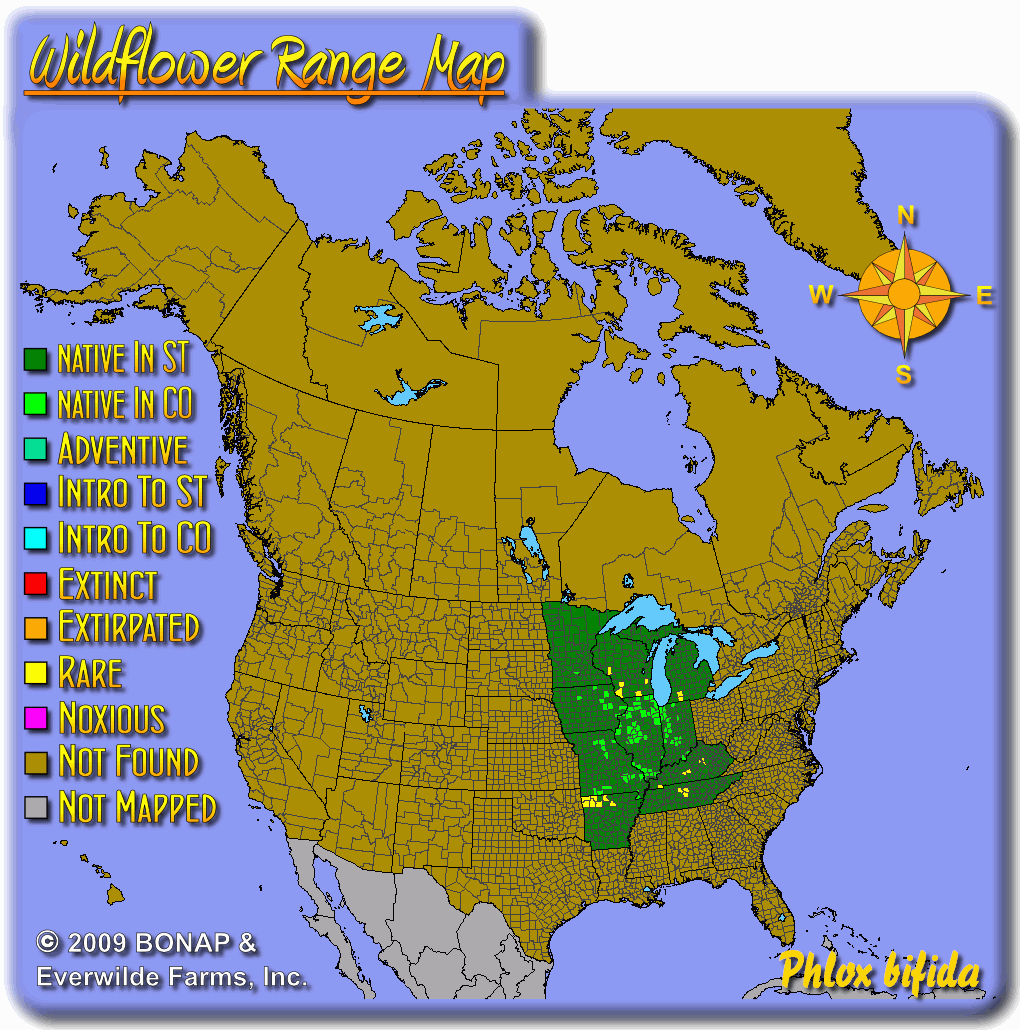Sand Phlox Seeds
Phlox bifida
- HOW TO GROW
- FAST FACTS
HOW TO GROW
Sowing: Direct sow in late fall, planting just below the surface of the soil. For spring planting, mix the seeds with moist sand and store in the refrigerator for 60 days before planting. Keep the soil lightly moist until germination. This seed can also be started indoors 6-8 weeks before planting in the spring; the best temperature for germination is 65 degrees F.
Growing: Water seedlings until they become established. Mature plants tolerate drought well because of their taproot, though they benefit from occasional watering in especially dry weather. Deadhead for increased blooming. If seeds are not required, cut the plant back after blooming has finished. This plant often spreads, and is highly attractive to bees and butterflies. This plant makes an excellent ground cover, border plant, or addition to a rock garden; it grows especially well in sandy soil.
Harvesting: These blossoms do not perform well as cut flowers, and are best enjoyed outdoors.
Seed Saving: After the flowers fade, small pods will form that eventually open and release their seeds. Gather the pods as soon as they have begun to turn brown, but before they burst open; watch them carefully to prevent loss, since the seeds can easily be blown away by the wind. Spread the pods out to dry. As soon as they have completely dried, break open the pods and remove the seed. Store the seed in a cool, dry place.
FAST FACTS
Common Names: Glade Phlox, Cleft Phlox
Latin Name: Phlox bifida
Species Origin: US Native Wildflower
Type: Native Wildflowers
Life Cycle: Perennial
USDA Zones: 5, 6, 7
US Regions: Midwest, Southeast
Seeds per Ounce: 12,000
Stratification: Cold/Wet for 12 Weeks
Germination Ease: Stratify 12 Weeks
Sunlight: Full Sun, Part Sun
Height: 4 Inches
Color: Blue
Bloom Season: Blooms Early Spring, Blooms Late Spring
Uses: Attracts Pollinators, Hummingbirds, Aromatic, Deer Resistant
DESCRIPTION

HOW TO GROW
Sowing: Direct sow in late fall, planting just below the surface of the soil. For spring planting, mix the seeds with moist sand and store in the refrigerator for 60 days before planting. Keep the soil lightly moist until germination. This seed can also be started indoors 6-8 weeks before planting in the spring; the best temperature for germination is 65 degrees F.
Growing: Water seedlings until they become established. Mature plants tolerate drought well because of their taproot, though they benefit from occasional watering in especially dry weather. Deadhead for increased blooming. If seeds are not required, cut the plant back after blooming has finished. This plant often spreads, and is highly attractive to bees and butterflies. This plant makes an excellent ground cover, border plant, or addition to a rock garden; it grows especially well in sandy soil.
Harvesting: These blossoms do not perform well as cut flowers, and are best enjoyed outdoors.
Seed Saving: After the flowers fade, small pods will form that eventually open and release their seeds. Gather the pods as soon as they have begun to turn brown, but before they burst open; watch them carefully to prevent loss, since the seeds can easily be blown away by the wind. Spread the pods out to dry. As soon as they have completely dried, break open the pods and remove the seed. Store the seed in a cool, dry place.
FAST FACTS
Common Names: Glade Phlox, Cleft Phlox
Latin Name: Phlox bifida
Species Origin: US Native Wildflower
Type: Native Wildflowers
Life Cycle: Perennial
USDA Zones: 5, 6, 7
US Regions: Midwest, Southeast
Seeds per Ounce: 12,000
Stratification: Cold/Wet for 12 Weeks
Germination Ease: Stratify 12 Weeks
Sunlight: Full Sun, Part Sun
Height: 4 Inches
Color: Blue
Bloom Season: Blooms Early Spring, Blooms Late Spring
Uses: Attracts Pollinators, Hummingbirds, Aromatic, Deer Resistant




